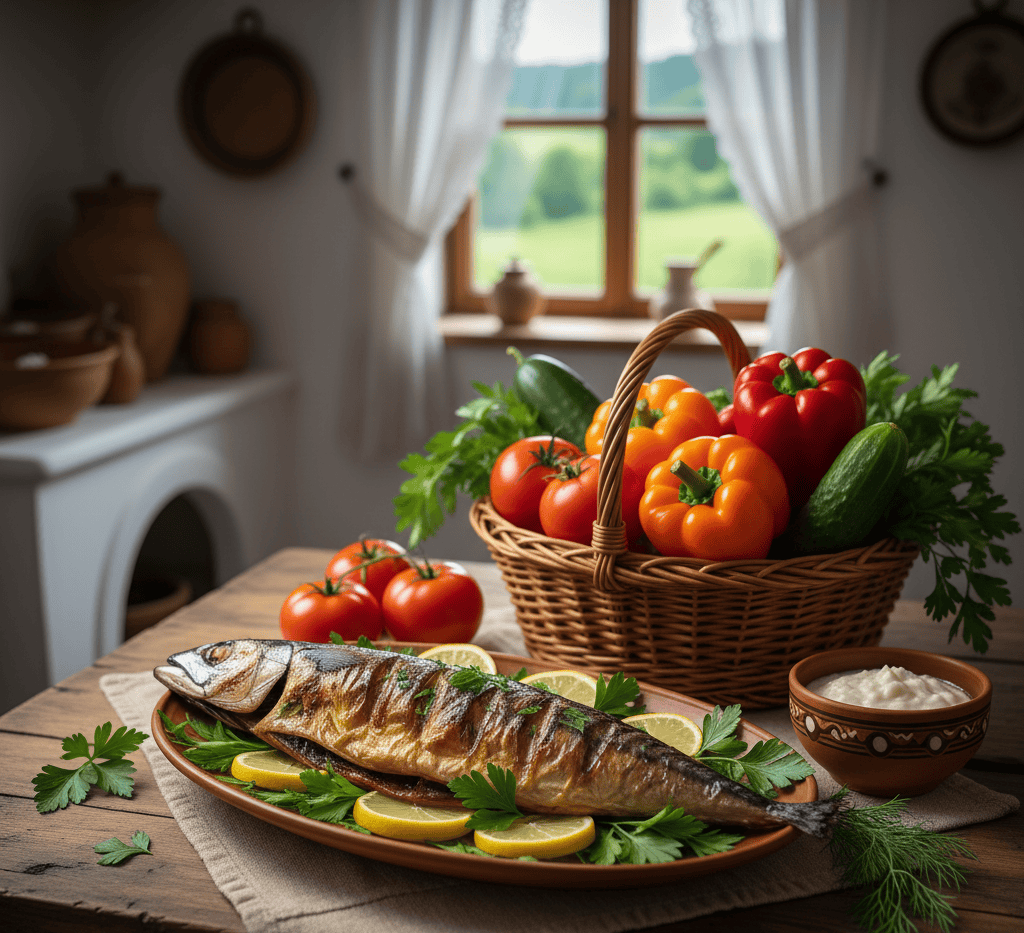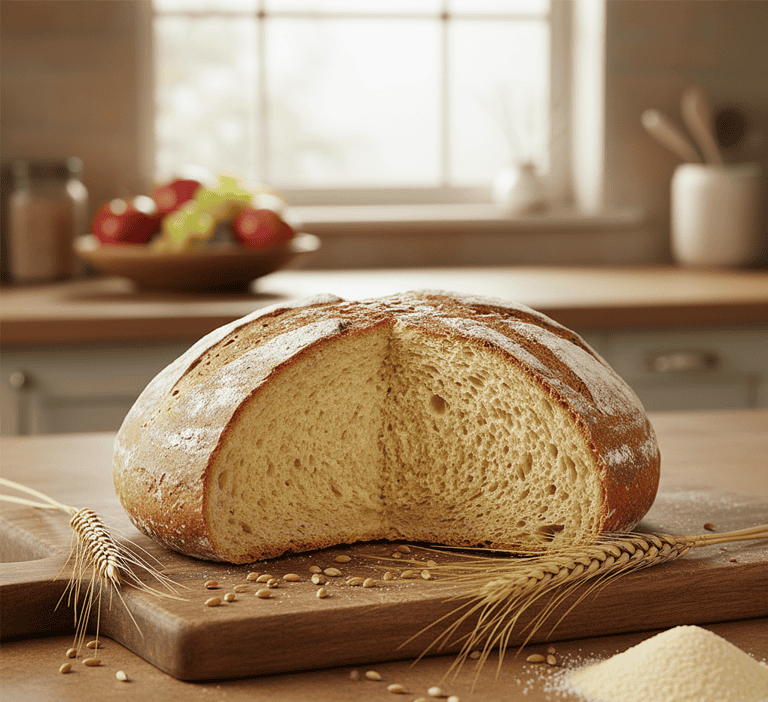Danube Mackerel – tradition, flavor, and health benefits

The Danube mackerel is a migratory fish that lives in the Black Sea and swims upstream along the Danube River every spring to reproduce. Its arrival is eagerly awaited by fishermen and riverside communities, as it marks both abundance and the renewal of seasonal cycles.
The fish has an elongated, silver-blue body and rich, flavorful flesh. Unlike marine mackerel species available year-round, the Danube mackerel is seasonal, which makes it particularly special and valued in regional cuisine.
Foreigner In Romania and in need of a prescription for your chronic treatment?
Contact Dr. Petrache’s Virtual Clinic for any medical issue you encounter while in Romania. Send an email to: clinica@diabet-si-nutritie.ro
Seasonality of Danube mackerel
This fish is not available throughout the year. It appears only during migration, mainly in spring, when the water warms up and large schools travel long distances. This limited availability increases its culinary value and cultural importance. For local communities, the arrival of Danube mackerel is almost a celebration, and many traditional recipes are prepared especially during this season.
Cultural and historical importance
For centuries, Danube mackerel has been part of the lives of people living along the river. It provided essential nutrition, brought income to fishermen, and shaped the culinary identity of the Danube region. Festivals are still organized today to celebrate its migration, particularly in the Danube Delta, where grilled or smoked mackerel has become a signature dish.
Simple meals such as grilled mackerel with polenta and garlic sauce are deeply rooted in Romanian tradition and symbolize the bond between people and the river.
Nutritional value
Danube mackerel is a fatty fish, but it provides healthy fats that are beneficial to the body. A 100 g portion delivers around 200–230 kcal, 18–20 g of high-quality protein, and 12–14 g of healthy fats, mostly omega-3 fatty acids. It is also rich in vitamin D, vitamin B12, vitamin A, and essential minerals such as selenium, phosphorus, and iodine.
This composition makes it highly valuable for heart protection, brain function, and immunity support. Omega-3 fatty acids from mackerel regulate cholesterol, reduce triglycerides, and improve vascular elasticity, which is why this fish is praised for its cardiovascular benefits.
Health benefits
Eating Danube mackerel regularly during its season provides multiple health benefits:
- supports heart health and reduces cardiovascular risk
- lowers inflammation and improves vascular function
- strengthens memory and cognitive performance
- provides high-quality protein for muscle maintenance
- ensures vitamin D for strong bones and teeth
For people with diabetes, Danube mackerel is an excellent choice. It contains almost no carbohydrates, supplies healthy fats, and helps balance metabolism when prepared healthily, such as grilled, baked, or steamed.
Passing through Romania and need a prescription for your chronic treatment?
Contact Dr. Petrache’s Virtual Clinic for any medical issue you encounter while in Romania. Send an email to: clinica@diabet-si-nutritie.ro
Traditional recipes
Danube mackerel is cooked in many traditional ways. The most famous dish is grilled mackerel served with polenta and garlic sauce. Smoked mackerel is appreciated for its intense flavor, while marinated mackerel is popular for its long-lasting taste. In the Danube Delta, mackerel soup is a local delicacy that attracts tourists seeking authentic Romanian flavors.
Comparing Danube mackerel with salmon and tuna
Globally, salmon and tuna are often considered the kings of healthy fish. However, the Danube mackerel deserves a place alongside them.
Salmon is widely known as a superfood, extremely rich in omega-3 fatty acids, vitamin D, and protein. It is available year-round and has a fattier, softer texture. Its biggest advantage is its consistent availability and high omega-3 content.
Tuna, on the other hand, is a lean fish with firm meat and lower fat content than salmon. It is an excellent source of protein and is particularly popular in Japanese and Mediterranean cuisine.
Danube mackerel falls somewhere in between. It provides omega-3 levels comparable to salmon but with slightly less fat, making it easier to digest. Compared to tuna, it offers more healthy fats and a richer flavor. Its unique trait is seasonality: unlike salmon and tuna, it is only available for a limited time each year, which makes it highly valued. For Eastern European consumers, it is also a sustainable local resource, unlike imported fish from faraway oceans.
This is why many call it the “Romanian salmon” – a fish with strong cardiovascular benefits, a unique flavor, and a deep cultural significance.
Ecology and sustainability
Being a migratory species, Danube mackerel is vulnerable to environmental changes and overfishing. To protect the species, authorities impose fishing bans during the reproduction period. Respecting these rules ensures long-term sustainability and the preservation of this tradition.
Consumers can also help by choosing responsibly sourced fish and respecting seasonality. In this way, Danube mackerel will remain available for future generations as well.
Tourist in Romania and in need of a prescription for your chronic treatment?
Contact Dr. Petrache’s Virtual Clinic for any medical issue you encounter while in Romania. Send an email to: clinica@diabet-si-nutritie.ro
Conclusion
Danube mackerel is more than a seasonal fish – it is a symbol of tradition, culture, and health. With a flavor that rivals salmon and nutritional benefits that surpass tuna in many ways, it is a true treasure of the Danube. Its cardiovascular benefits are appreciated worldwide, and its cultural significance in Romanian cuisine is undeniable.
Every spring, the return of Danube mackerel is not just a natural phenomenon but a celebration of life, abundance, and the bond between humans and the great river.
Follow us on:
- FaceBook: Diabetes & Nutrition;
- YouTube: Diabetes Facts.
















